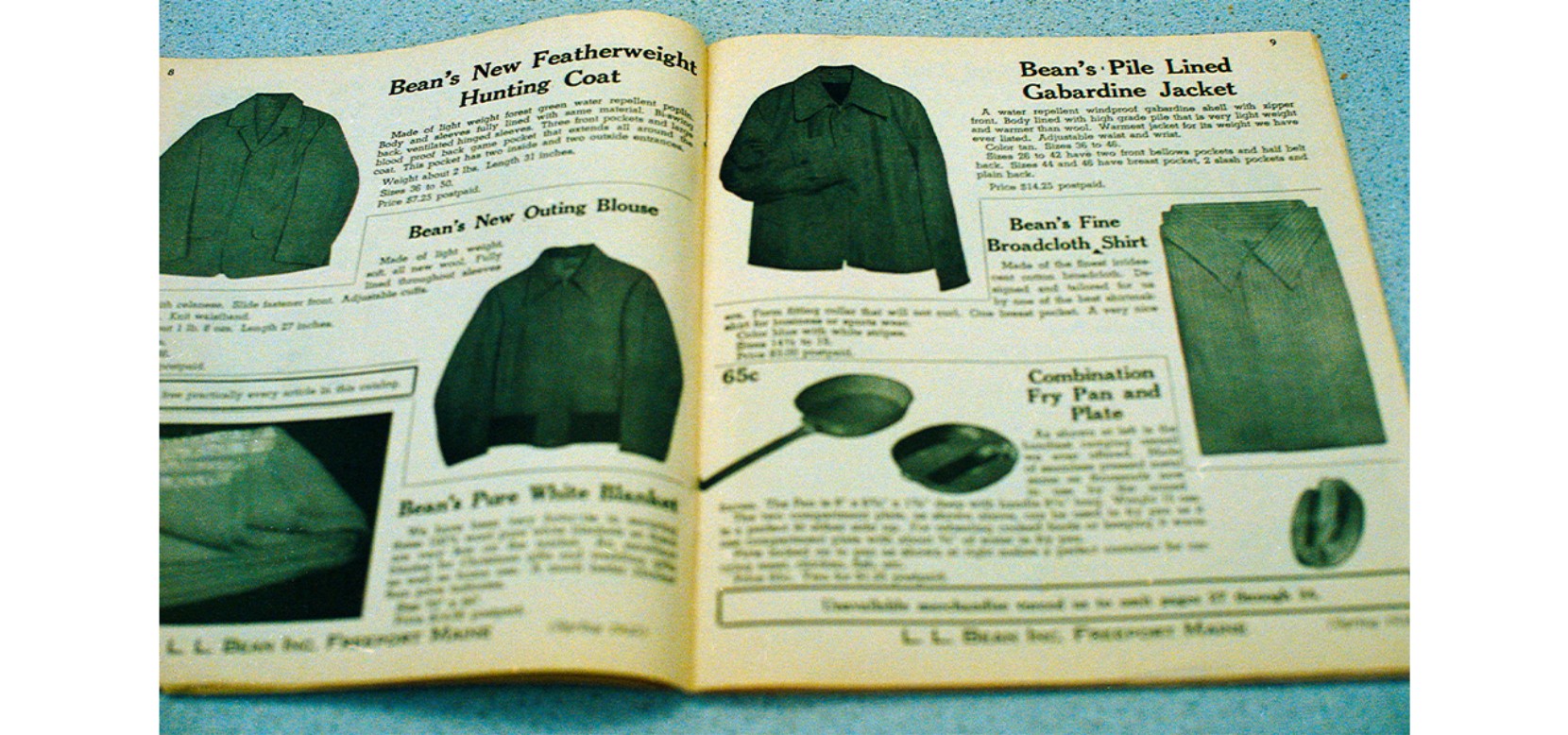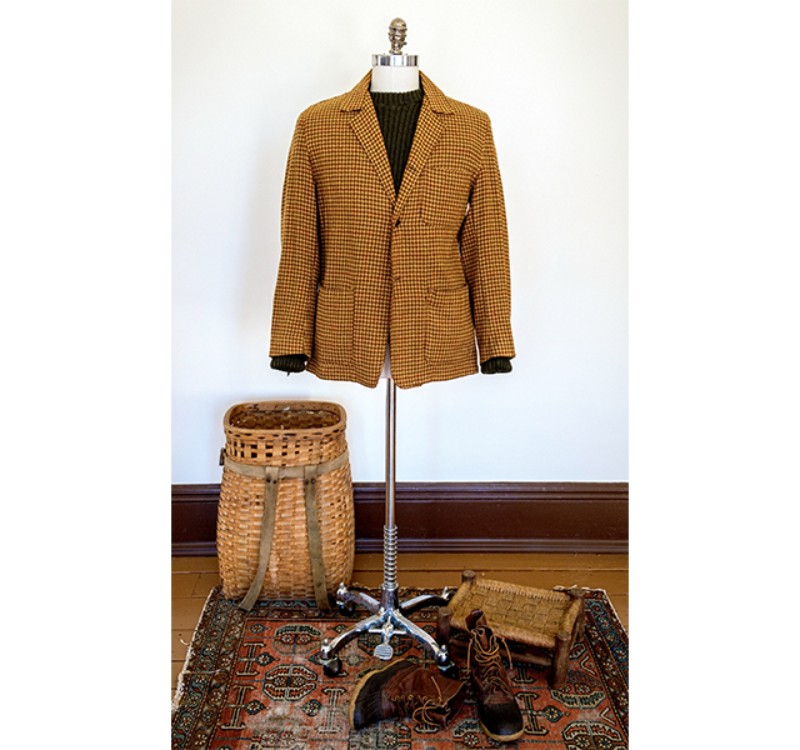Freeport, ME, March 22, 2021
Inside the L.L.Bean Archives: A Living History
WORDS BY DAVID COGGINS, PHOTOS BY CHASE WINFREY
History can tell us a lot. It can make us feel connected to people, things and experiences as if we lived it ourselves. Here, L.L.Bean guest editor David Coggins shares his experience in the L.L.Bean archives, the memories it conjured, and how history makes him feel more connected to the natural world.
Coggins is a New York Times best-selling author whose forthcoming book, The Optimist: A Case for the Fly Fishing Life, is out this May.
Spending time in the L.L.Bean archives is like reading a good biography: You learn vivid historical facts while seeing the subject in a broader context. It’s full of specific, fascinating details that, taken together, provide a larger view. That makes it sound very official and grand—the main emotion visiting the archive isn’t scholarly or serious, it’s just fun.
Set in L.L.’s restored house in Freeport, Maine (that would be Leon Leonwood, for the uninitiated), the archive is a series of oversized racks and shelves in a temperature-controlled vault. Each aisle features a certain category – jackets, say, or sweaters – and is tagged with the year, model and any other historical details.
1945 L.L.Bean Spring Catalog
Archival Catalog
There are moments of recognition (Oh, that’s the shirt I’ve been trying to track down on eBay). Or discoveries so rare they don’t exist outside the room itself (parkas from the 1920s). Then there are simply moments you can’t believe what you’re seeing (Wait, Babe Ruth wrote a letter praising his pair of Bean Boots?) Yes he did, in beautiful cursive handwriting on his own engraved stationery, no less, addressed to Mr. Bean. Classy. Oh, and Ernest Hemingway writing a friend in 1928, instructing him on what to buy at Beans as he passed through Freeport. This is downright historical.
Letter from Babe Ruth, 1934
Archival Sweater Tags
There’s also a sense of intimacy and familiarity, like seeing a photo of old relatives who bear a striking resemblance to younger generations. Looking at rows of ancient Bean Boots, I felt the goodwill and happiness I feel when I see old Saabs. But my beloved Swedish cars are mostly obsolete, while Bean Boots are still going strong. And what’s remarkable about the archives is just how many of these designs still endure.
1940s-1950s L.L.Bean Rain Hat
A Cabinet of Bean Boots in the L.L.Bean Archives
L.L.Bean Root Beer
1930s L.L.Bean Chamois Shirt
The Chamois Shirt in that particular color of mustard? The archives edition is from the 1930s and looks right at home for a walk around the lake. The shirt just keeps on working. I love its well-proportioned collar (that’s to say: on the larger side, which is perfect for country clothes) and the slanted chest pocket flaps you still see today. There are old catalogs and artwork, custom orders and obscure partnerships. The labels are slightly different, but the soul remains the same.
Other favorites speak to you directly from the past. A waxed cotton rain hat that looks familiar, because I swear it’s the same one I saw on the wall of Winslow Homer’s studio in Prouts Neck, ME. I’m sure the painter (and angler!) outfitted himself here. The brown Loafer Jacket from the 1970s in houndstooth—suits my temperament very well and fits pretty well too (yes, they let me try it on).
1970s Brown L.L.Bean Loafer Jacket
David in Loafer Jacket
Fly Fishing Catalog Feature
Archival Reels
Trout Flies
There’s a reason few people fish with bamboo rods (as L.L. himself did), now they’re lighter and stronger—it’s important to evolve when that’s in order. But it’s also important to know when what you’ve got can’t be improved upon. That’s why there are canvas field jackets, wool fishermen’s sweaters and the old Bean Boots that look just as they do today. They were made, used in the field, refined and pretty much left alone.
Why do we come back to these things? Because they tell us something about our motivations. They connect us to the outside world and help us thrive when it’s windy, raining or snowing. Anything designed to be used has its own virtue and purpose. It’s the opposite of fashion, which is about adornment. This is about necessity. Good design answers a question. What’s the best way to stay warm? To make coffee over a fire? To be visible while you’re in the woods? Or invisible? That’s why anything well-designed reflects a sense of human need.
In the archives, I felt a sense of recognition. That my love of the natural world—of fishing, of design, of language—was connected, in a small way, to people who came before me. That gives way to empathy toward the people who will come here in the future and feel connected to the things we loved.


















